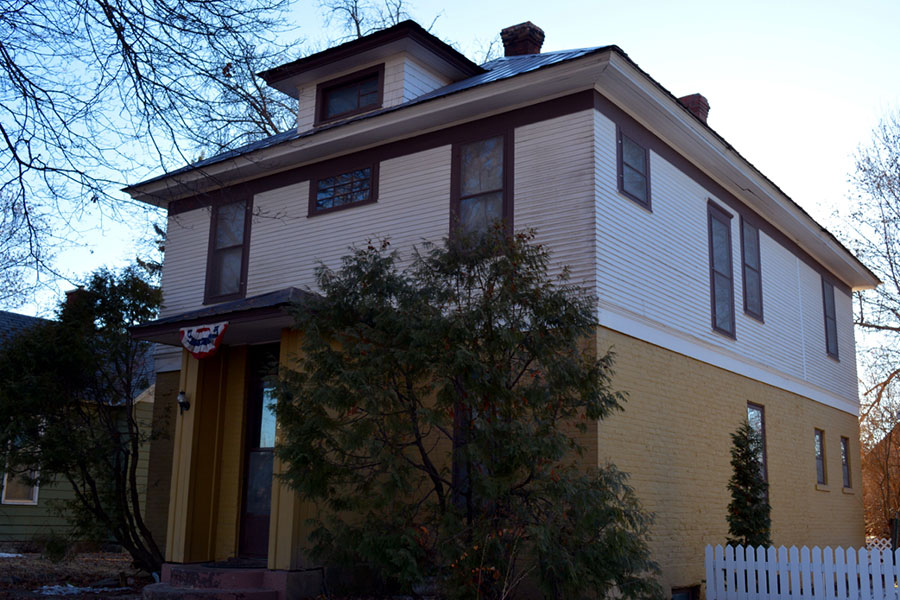In the spring of 1891, the first building lots in Kalispell sold with vigor and all the promise of a burgeoning railroad town. Those seeking opportunity flocked along Main Street. While those a bit timid of the hustle and bustle sought lots near the outskirts, where families had room to keep both house and horse (and although the present-day garage isn’t telling any secrets, a three-story barn once stood in its place).
Soon, neighbors began to form neighborhoods, such as when Thomas Lacher and Frederick Ferguson, two Great Northern Railway workers, planned to build homes along the 300 block of Fourth Avenue West.
Back then, mutual benefit trumped individual expression, as Lacher and Ferguson proved. They were both immigrants from England. They worked for the same railroad. And they bought lots on the same street, side-by-side, and planned to build similar style homes.
The Scott/Forhan House and the Ferguson House next door (at 320 Fourth Ave. W.) were once identical, quaint, Queen Anne four-square cottages. However, the Ferguson House retains its original form, while the Scott/Forhan House bears hardly a trace.
In the 1910s, Lacher sold the house to Stacy Scott and his wife Carrie. Stacy was a windmill agent (yes, a salesman who sold windmills used for pumping water and irrigating crops). The Scotts owned the home for several years and kept it as-is. They sold the home in 1923 to William Forhan, another railroad man who worked for the Great Northern for 44 years.
Forhan was a conductor between Havre and Spokane before serving along the Kalispell spur lines between Columbia Falls, Somers and Kila (the route known as the “The Galloping Goose”).
Forhan was an Irish immigrant. And his wife Hermine (née Merker) was born in 1886 at Dux, Bohemia (now in the northern part of the Czech Republic near the German border) and proves how the cultural heritage of those who came to the Flathead reaches far and wide (even to places that no longer exist).
And like many other immigrants, the Forhans were typical Kalispell homeowners of the 1920s, and even renovated their house as many others did. Although, perhaps it is better to say they completely transformed a quiet Queen-Anne into a formidable abode of vernacular style.
Indeed, the house grew in every dimension. The first floor was expanded at the back. A full basement was added below. And a second floor with several bedrooms was added on top, with a bathroom included. While the idea of an “upstairs bathroom” was lofty, even for the roaring twenties, the Forhans had good reason (if not practical necessity) for putting a bathroom on the second floor. They were a growing family – a family of nine children.
Much like the ivy that grew on the outside of the house, something always seemed to be budding and blooming around their home. For example, in the 1930s, William kept a home business selling tulip bulbs. In the 1940s, daughter Nelle operated “Nelle’s Beauty Shop” from the home. Meanwhile, her sister and brother-in-law raised their six children at the home as well. Hence, the house was extended, much like the Forhan family was extended.
Ultimately, the house remained in the family for nearly 45 years, until the late 1960s. While that’s no small measure, there is perhaps a better measure of the family home.
When Hermine sadly passed away in 1972, she was survived by 21 grandchildren – plus 22 great-grandchildren – all descendants of the “Forhan children,” including one who fondly recalled this was a “house full of love.”
Jaix Chaix is a columnist and author of Flathead Valley Landmarks and other local history books that are available for sale at the Flathead Beacon at 17 Main St. in Kalispell.
